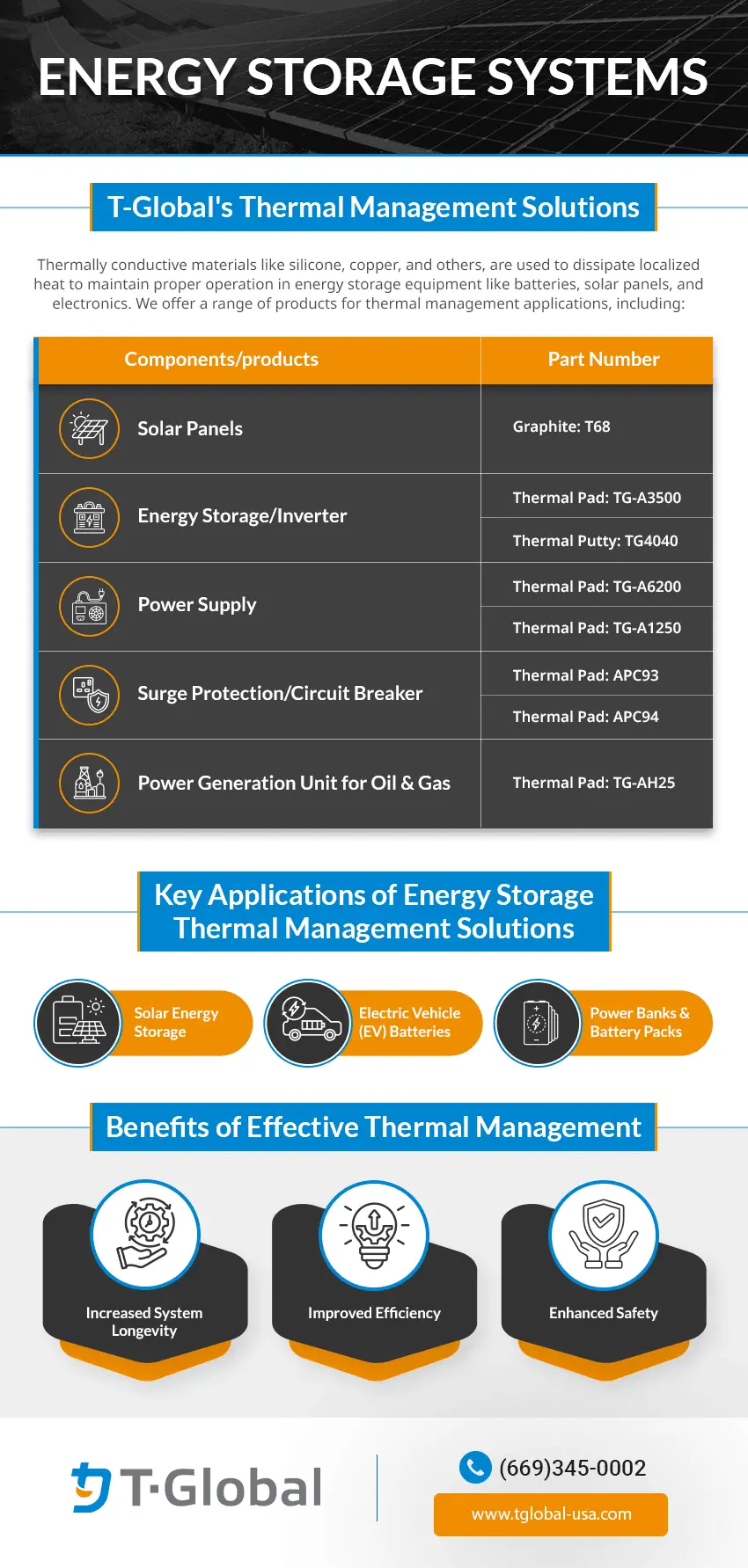In the global push toward renewable energy and high-efficiency power systems, effective thermal management is critical to safe, reliable, and long-lasting energy storage systems (ESS). Battery-based energy storage systems, as well as those designed for renewable energy sources, like wind and solar, generate substantial heat. This heat can damage the storage equipment, reducing its capacity and overall functionality. What’s more, excessive heat can spread to surrounding equipment, damaging it and posing safety risks to personnel and the environment; therefore, it’s important to manage and dissipate excess heat to prevent thermal runaway in these systems.
T-Global USA specializes in advanced thermal management solutions for energy, electrical, and electronic applications. Learn more about our products and the advantages they offer.
T-Global’s Thermal Management Solutions
Thermally conductive materials like silicone, copper, and others, are used to block or dissipate localized heat to maintain proper operation in energy storage equipment like batteries, solar panels, and electronics. We offer a range of products for thermal management applications, including:
- Thermal Pads. T-Global’s thermal pads, like the TG-A3500 and TG-A6200 and others, improve heat transfer and reduce thermal resistance when used with heat sinks and electronic assemblies. Made with silicone or non-silicone conductive materials, pads are available in many shapes and thicknesses. Options include highly compressive padding as well as pads that are difficult to deform, and some include a top layer of fiberglass for added strength and tear resistance.
- Thermal Putty. Silicone and non-silicone thermal putties help seal gaps between a heat source and heat sink to improve thermal conductivity. It is available in convenient applicator tubes for easy use.
- Thermal Potting Compounds. This two-part epoxy-based sealing compound is thermally conductive and waterproof. It cures at room temperature (or fasted with the application of heat) and has high hardness for durability and component protection from moisture and heat.
- Heat Pipes. Heat pipes are copper tubes that are sealed on both ends and filled with a working fluid that travels back and forth inside. At one end of the tube, heat causes that fluid to evaporate and travel to the other, cooler end, where it condenses and dissipates the heat. These pipes are passive and work quickly to regulate temperatures. They are available in several diameters and lengths.
